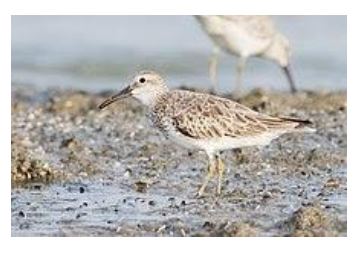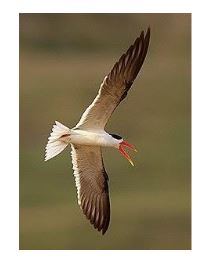UPSC Articles
Great knots & Indian skimmers: Dredging activity halted at Kakinada coast due to possible threat to the species
Part of: GS-Prelims and GS-III – Environment; Biodiversity
In News:
- The Forest Department has directed GMR Energy Limited to stop dredging activity in the Kumbabhishekham mudflat with immediate effect.
- It has also ordered the removal of the bund around the mangrove cover on the Kakinada coast, Andhra Pradesh.
- The decision was taken after taking into account the threats to the mudflat and the mangrove cover and destruction of the prime habitat of birds — endangered Great knots (Calidris tenuirostris) and vulnerable Indian skimmers (Rynchops albiocollis).
Important value additions
Great knots
- The great knot (Calidris tenuirostris) is a small wader.
- It is the largest of the calidrid species.
- These birds forage (search for food) on mudflats and beaches, probing or picking up food by sight.
- They mainly eat molluscs and insects.
- It is one of the species to which the Agreement on the Conservation of African-Eurasian Migratory Waterbirds (AEWA) applies.
- Their breeding habitat is tundra in northeast Siberia.
- They are strongly migratory wintering on coasts in southern Asia through to Australia.
- IUCN status: Endangered

Image source: Click here
Indian skimmers
- It (Rynchops albicollis) is one of the three species that belong to the skimmer genus Rynchops in the family Laridae.
- It is found in southern Asia, where it is patchily distributed and declining in numbers.
- They are mainly found in rivers or estuaries.
- They are very brightly marked in black, white and orange, making them difficult to miss.
- IUCN status: Vulnerable

Image source: Click here
Dredging
- It means clearing the bed of (a harbour, river, or other area of water) by scooping out mud, weeds, and rubbish with a dredge.
- It can create disturbance to aquatic ecosystems, often with adverse impacts.
- Dredge spoils may contain toxic chemicals that may have an adverse effect on the disposal area.
- It often dislodges chemicals residing in benthic substrates and injects them into the water column.

Image source: Click here
Mudflats
- They are coastal wetlands that form in intertidal areas where sediments have been deposited by tides or rivers.
- A recent global analysis suggested they are as extensive globally as mangroves.
- They are found in sheltered areas such as bays, bayous, lagoons, and estuaries.

Image source: Click here














